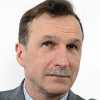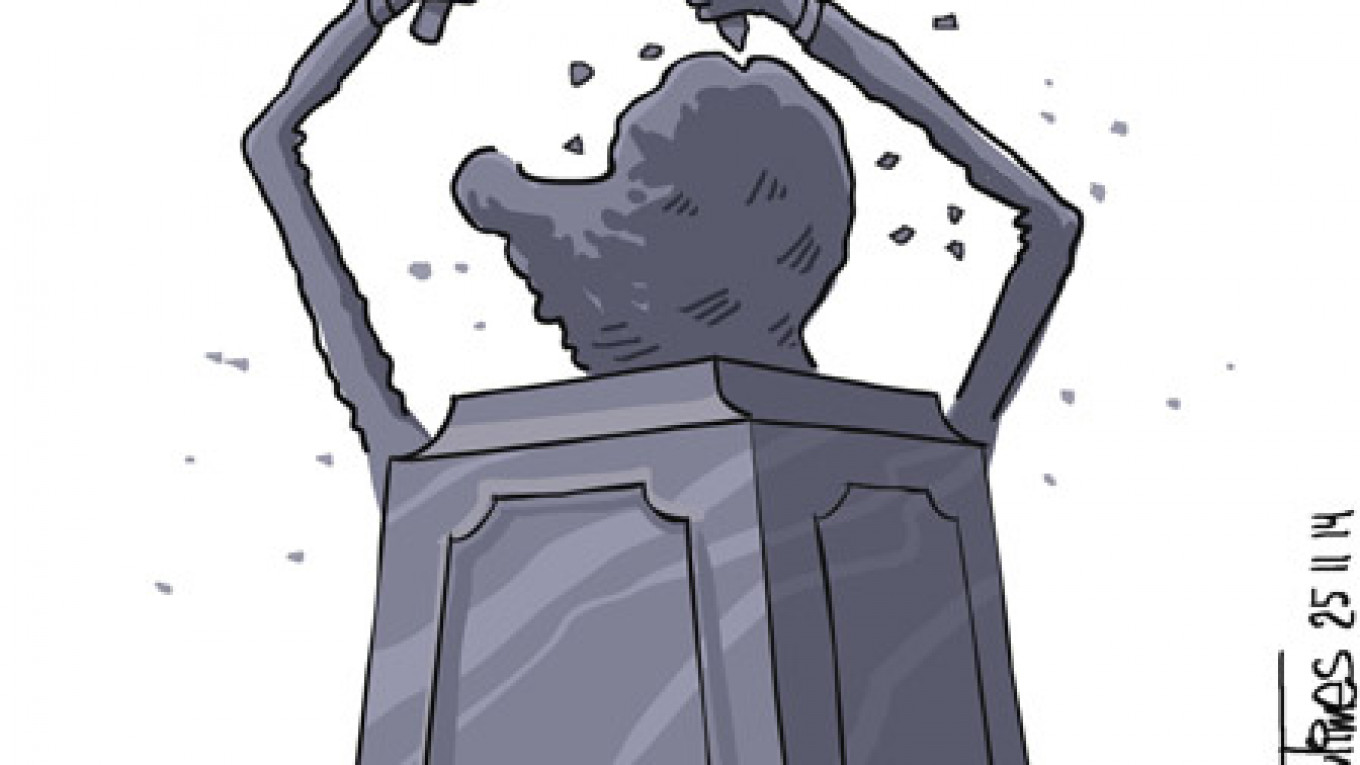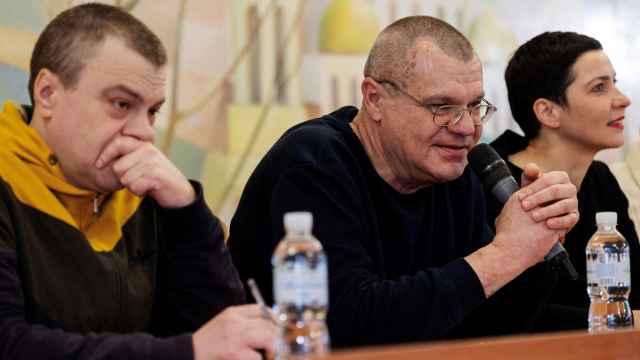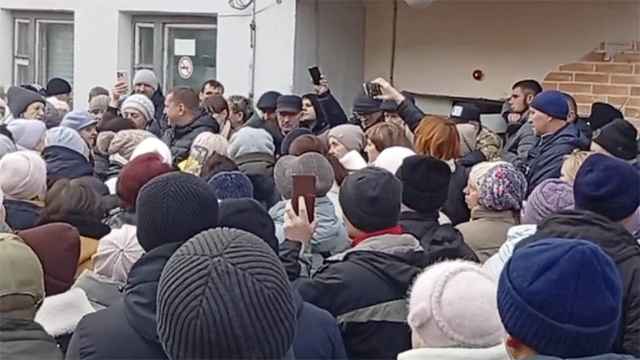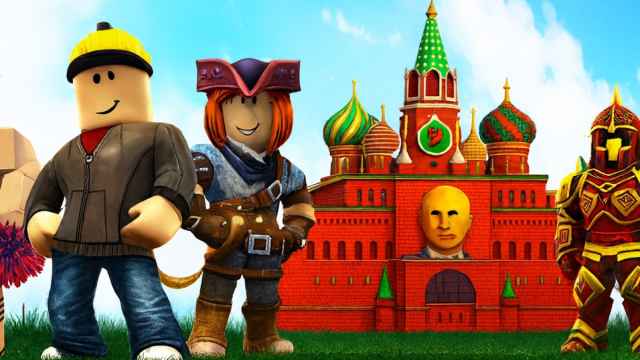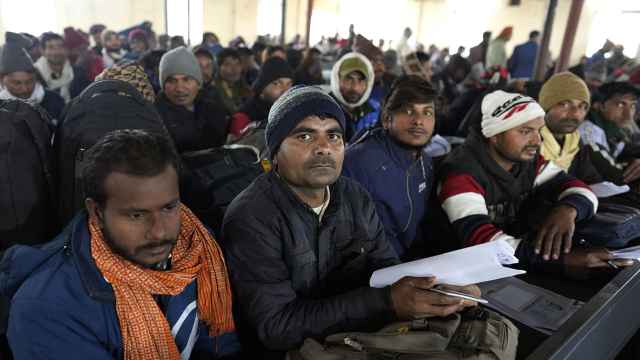The decision to erect a monument to 19th-century Emperor Alexander I near the Kremlin, and for President Vladimir Putin to participate in the unveiling ceremony, is an act of historical justice. After all, Moscow's Alexandrovsky Garden is already named after him, and a monument to him used to stand there before the Bolsheviks removed it and had it melted down. By giving special attention to perpetuating the memory of the emperor, Putin not only commemorated the 200th anniversary of Russia's victory over Napoleon but also continued his campaign to position modern Russia as the successor to the Russian Empire.
During the ceremony on Nov. 20, Putin referred to Alexander I as one of the founders of a system of European security. "It was then that conditions for the so-called balance were created, based not only on mutual respect for the interests of different countries, but also on moral values," Putin said. His words clearly referred equally to modern Russia, as it strives to have not only a loud voice in European and global affairs but to also claim a sort of moral leadership as a counterbalance to the "rotten and immoral West."
Following the Napoleonic wars, the victorious powers set out to restore their feudal and absolutist monarchies that had been destroyed by processes triggered by the French Revolution and Napoleon's actions. In those days, Russia probably perceived its contemporaries much as Moscow now views the "color revolutions" in Ukraine and Kyrgyzstan — that is, as popular uprisings after which the authorities had to struggle to restore order. And at its core, today's order is much like the monarchical and feudal system of the past.
The Congress of Vienna was held in that city in 1814-15, with Austrian statesman Klemens Wenzel von Metternich presiding. It brought together representatives of all the European countries except the Ottoman Empire. The Congress of Vienna is comparable to the Yalta and Potsdam conferences that shaped Europe after World War II, and to some to extent the Helsinki Conference in 1970 that regulated the interaction of the various states that, by that time, had aligned into different blocs.
Looking back, it is amazing that those contentious monarchies were able to reach an agreement given the atmosphere of cynicism, intrigue and mutual distrust that existed. Apparently, today's leaders in Moscow would like to see a return to the model of international relations that characterized the Yalta, Potsdam and Vienna gatherings.
The Congress of Vienna completely redrew the map of Europe and included what historians would later refer to as the fourth partitioning of Poland. Part of the Duchy of Warsaw that Napoleon had created took the name of the Congress Kingdom of Poland and became part of the Russian Empire, making Emperor Alexander I also the king of Poland. Austria received the southern part of Poland and a large part of so-called "Red Russia," today's western Ukraine.
This is the origin of the current cultural and political split in Ukraine, a country that grew territorially in part through the Molotov-Ribbentrop Pact of 1939 — toward the pro-Russian southeast and the pro-European Galicia. Western Poland returned to Prussia. Switzerland was the luckiest participant because it was there at the Vienna Congress that its neutrality was proclaimed and guaranteed by Europe. From that point onward, the Swiss economy began to flourish, undisturbed even by the two subsequent bloody European wars that bypassed the country.
The Vienna Congress established not only a new balance of power in Europe and put the four "superpowers" of the time — Russia, Austria, Prussia and Britain — in the leading roles, it also marked the pinnacle of 19th-century Russian diplomacy. Today, Moscow can only dream of simply "carving up" Europe according to its wishes. In fact, Russia retained that level of influence after the death of Alexander I, under Tsar Nicholas I and right up to Russia's defeat in the Crimean War in 1856.
As for perpetuating the legacy of Alexander I, his rule was sharply divided between the period prior to the war with Napoleon and that which followed. During the first period he followed the example of his grandmother, Catherine the Great, by implementing reforms that included restrictions on the institution of serfdom and even went so far as to consider abolishing the practice altogether. The reformer Count Mikhail Speransky was a personal favorite of his.
Alexander I implemented large-scale reforms to the higher levels of government and the education system. He set out to transform all state institutions according to European models and to achieve a rapprochement with Europe. Speransky prepared a comprehensive set of radical bourgeois political reforms that even included the planned establishment of an elected State Duma and, consequently, a constitutional monarchy.
Putin said, "The era of Alexander I was a time of Russia's revival and consolidation. Many state and legal reforms were carried through, the first Russian round-the-world expedition was launched, and five new universities were founded." The same is largely true of Putin's first term in office, when his administration actively introduced a number of reforms to government.
In addition, Alexander I largely reopened Russia's doors to Europe after Catherine the Great had closed them and Emperor Paul I, fearing a revolution, had practically locked them down behind an Iron Curtain. Foreign books began flowing into Russia, whereas censors had previously blocked them all. In fact, the censorship of books was completely abolished, great numbers of Russians began studying abroad, and not a single person was subjected to the death penalty during the reign of Alexander I.
The "Arakcheyevshchina" — reactionary repression made infamous by Russian General and Count Alexei Arakcheyev — became the symbol of the second period of Emperor Alexander's rule. His ardor for reform cooled considerably, although he did make preliminary plans for liberating the serfs. However, it never went any further. When the European revolutions began in 1820 and Russia's own Semenov regiment rebelled — not unlike Russia's mass protests from late 2011 to early 2012 — the emperor responded with an iron fist and forgot all thoughts of reform.
The death of Alexander I was long shrouded by the myth that he had not actually died of typhoid fever in Taganrog, but had grown tired of the hassles of leadership and taken on the guise of an old hermit named Fyodor Kuzmich, dying only in 1864 in Tomsk. If true, he would have probably regretted seeing how, after suppressing the Decembrist uprising in 1825, Russia became highly reactionary under his successor, Tsar Nicholas I, causing the country to lose its former influence in Europe and pushing it into technological backwardness.
That, in turn, resulted in Russia's defeat in the Crimean War and led to the modernizing liberal reforms of Tsar Alexander II. It is very unlikely that the authorities will put up a monument to Emperor Nicholas I in the near future, although they have already erected one to Tsar Alexander II — also not far from the Kremlin.
Georgy Bovt is a political analyst.
A Message from The Moscow Times:
Dear readers,
We are facing unprecedented challenges. Russia's Prosecutor General's Office has designated The Moscow Times as an "undesirable" organization, criminalizing our work and putting our staff at risk of prosecution. This follows our earlier unjust labeling as a "foreign agent."
These actions are direct attempts to silence independent journalism in Russia. The authorities claim our work "discredits the decisions of the Russian leadership." We see things differently: we strive to provide accurate, unbiased reporting on Russia.
We, the journalists of The Moscow Times, refuse to be silenced. But to continue our work, we need your help.
Your support, no matter how small, makes a world of difference. If you can, please support us monthly starting from just $2. It's quick to set up, and every contribution makes a significant impact.
By supporting The Moscow Times, you're defending open, independent journalism in the face of repression. Thank you for standing with us.
Remind me later.

